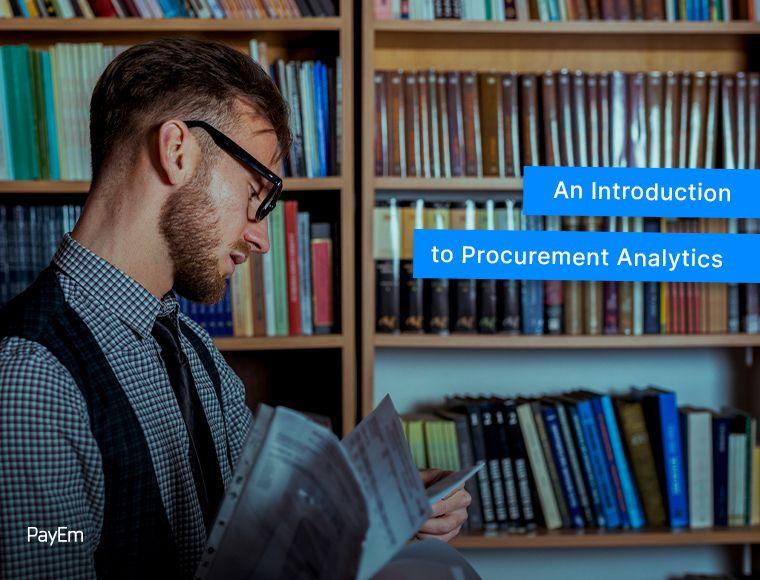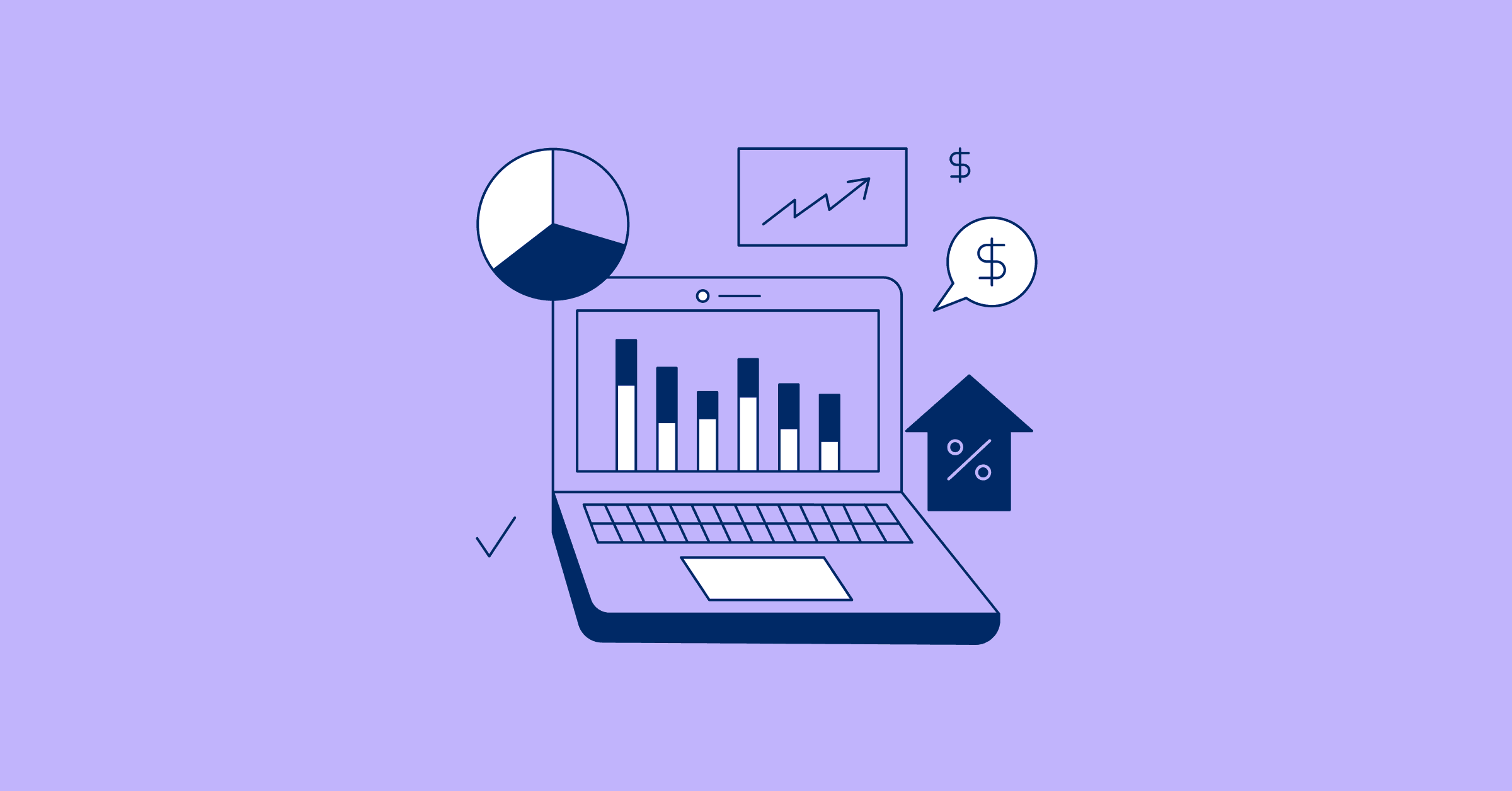November 03, 2022
An Introduction to Procurement Analytics

Sign up for our newsletter
Stay informed with the latest trends and best practices in finance and procurement.

What is procurement analytics?
Procurement analytics describes the comprehensive analysis of data sets gleaned from various sources within the procurement system. This data is analyzed and used to inform definitive decision-making and make meaningful insights that will impact a business’s financial health.
Procurement analytics provides businesses and organizations with better insight into their procurement spend. Using quantitative analysis methods, this greater clarity leads organizations to derive potential outcomes. Predictive analytics automation tools collect internal and external data from various sources and compile it into data sets. This provides companies with the opportunity to leverage procurement data to make informed decisions that will positively impact the future of the business.
This article will cover the following topics:
- What is procurement analytics?
- What are the different types of procurement analytics?
- How can procurement analytics benefit businesses?
- What metrics can procurement analytics track?
- What are some examples of procurement analytics?
- How can businesses track and act upon procurement analytics?
What are the different types of procurement analytics?
There are essentially four distinct types of procurement analytics: descriptive analytics, diagnostic analytics, predictive analytics, and prescriptive analytics. With these four types of procurement analytics, the analytics process looks at past behaviors to describe current results and makes diagnostic findings based on these current conditions. Additionally, it examines recent trends in data sets to make educated guesses about future results, which ultimately aids in decision-making.
Descriptive Analytics: This type of procurement analytics describes the analysis of historical data to describe past events.
Diagnostic Analytics: This type of procurement analytics examines past data to explain and understand why specific outcomes occurred.
Predictive Analytics: Predictive analytics is the analysis of current patterns and trends used to predict future procurement outcomes.
Prescriptive Analytics: This type of procurement analytics explores predictive analysis and uses it to form diagnostics to aid in decision-making.
How can procurement analytics benefit businesses?
Exploring how procurement analytics can be beneficial to an organization is essential to making the best decisions for the health of a company. With transparency gleaned from data, a business can make the right changes and necessary adjustments for improvement. Without this insight, decisions are made in the dark without full knowledge of how they will impact the future of the business.
Procurement analytics covers far more than just company spend. In fact, it reaches several vital areas, from category management to strategic sourcing. It also encompasses the entire procure-to-pay process and looks at identifying potential areas for positive change at all levels. Let’s examine some of the primary benefits of procurement analytics for businesses.
Sourcing
Procurement teams will find that analysis can prove indispensable for strategic sourcing tactics. Analytics can help pinpoint suitable suppliers and provide insightful data regarding the supplier’s risk and quality. Additionally, procurement analytics can benefit the sourcing stage by revealing key metrics regarding costs and budget around sourcing limitations that could impact the company’s bottom line.
Category Management
Procurement analytics give category managers insight into savings opportunities and methods by which supply risks can be addressed and mitigated.
Sustainability
When it comes to sustainability, procurement analytics offers companies exceptional transparency in assessing their contribution to sustainable business practices. With increasing trends towards corporate social responsibility, organizations are using analytics to determine the environmental impacts of their procurement decisions to reduce their footprint and create sustainable procurement practices.
Procure to Pay
Analytics in the procure-to-pay process involves the purchase order cycles and many details that relate to this process. Some of the ways it is helpful here are in measuring and improving upon payment terms, payment accuracy, and uncovering potential errors that could negatively impact the business.
Improving business functionality
Procurement analytics assists in improving overall business functionality at all levels, beyond company spend. In fact, by analyzing the data involved in the procurement process, an organization can gain valuable market insights to support business decisions that affect the company on a wide-scale basis. Without sufficient data and insights achieved with procurement analytics, businesses can fail to achieve cost reduction goals, prevent supply chain disruptions, and miss out on KPIs.
Procurement analytics can be used to:
- Look into vendor metrics such as delivery timelines, quality of products, and time resolving any challenges that arise.
- Effectively manage contracts to get the best discounts and to predict any potential contract-related liabilities.
- Mitigate risks, efficiently handle resources, and achieve higher compliance margins.
- Evaluate timelines for vendors, the quality of goods and services, and the time for resolving challenging orders.
- Pinpoint cost-saving opportunities.
- Predict the demand volume for the entire procurement cycle.
With procurement analytics in place, procurement teams can more effectively reach their goals while getting the specific information they need to make crucial decisions. It provides full support for stakeholders in the procurement field as well as in multiple areas of the company. Procurement analytics can benefit CPOs, manufacturing stakeholders, procurement analysts, category managers, purchasing managers, and material quality control specialists.
What metrics can procurement analytics track?
Various metrics may also be referred to as key performance indicators, or KPIs, that can be tracked in procurement analytics. This data offers measurable business values that can prove indispensable in developing effective procurement strategies.
Some of the metrics procurement analytics can track include:
- Spend vs. budget
- Spend under management
- Total cost of ownership
- Cost avoidance
- Cost savings
- Average payment terms
- Number of suppliers
- Vendor performance
- Exchange rate exposure
What are some examples of procurement analytics?
There are different ways in which organizations use procurement analytics to inform their decision-making. Some of the most common types of procurement analytics include:
- Contract analytics: Analyzing supplier contracts and related meta-data like expiration dates and payment terms.
- Procurement benchmarking: Comparing an organization’s procurement performance to other market benchmarks.
- Spend analytics: Analyzing internally and externally sourced procurement spend data.
- Supplier analytics: Analyzing a supplier’s performance, supplier risk, diversity, and sustainability.
- Spend forecasting: Making inferences based on procurement spend data to predict its future impact on profitability.
- Savings lifecycle analytics: Analyzing savings projects and determining their impact on the organization’s financial health.
An automated solution for accurate procurement analytics
Using an automated solution for accurate procurement analytics is highly beneficial for many different areas of the company. One such solution that can provide comprehensive data in support of many critical functions is PayEm.
PayEm is the complete global spend and procurement platform that offers in-depth procurement analytics for spend management. This provides CFOs, VPs of Finance, and VPs of Procurement with the data insights they need for critical decision-making. With the right data, an organization can make decisions that improve the efficiency of the business as a whole, all while enhancing overall profitability. With that in mind, contact PayEm’s experts to book a commitment-free, no-cost demo of the platform today.


